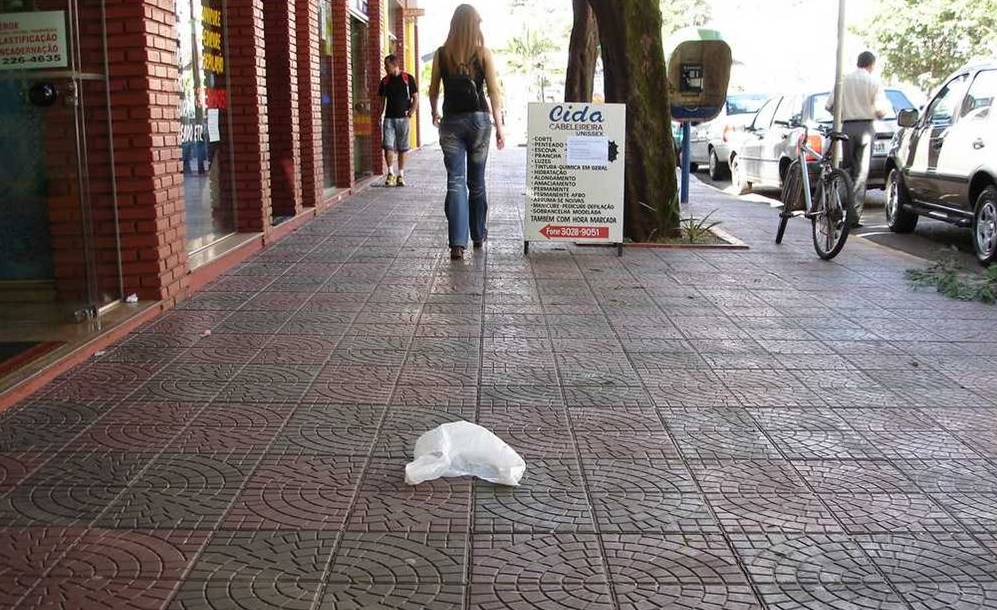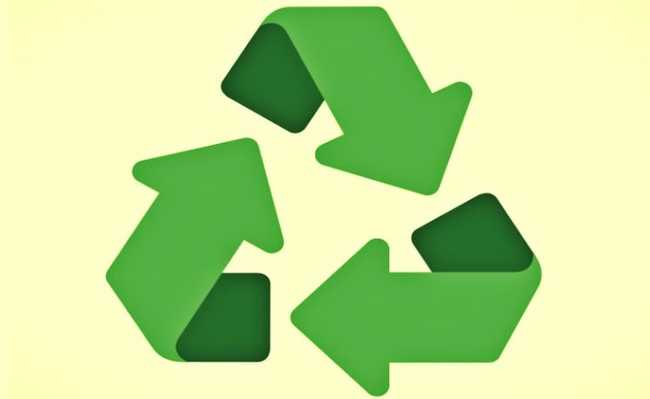Entrevista concedida pela FUNVERDE para a revista HM! sobre as malditas sacolas plásticas de uso…
What is an oxo-biodegradable plastic?
It is a general understanding that discarded conventional plastic packaging films & carrier bags will endure in the environment for many years. This is clearly an issue in terms of increasing requirements for landfill sites for those items collected as refuse & also the damage to wildlife & the unsightly nature of these items left as litter. To counter these issues, there is a movement to manufacture packaging products which will have significantly reduced lifetimes once discarded as waste.
One approach to this is to incorporate additives into materials such as polyethylene (PE), polypropylene (PP), polystyrene (PS) & polyethylene terephthalate (PET) which will accelerate the degradation of the plastic in the environment.
These additives (pro-oxidants) use a salt of a transition metal such as cobalt (Co), iron (Fe), manganese (Mn) or nickel (Ni) to drive the oxidation process which, under the action of heat or light, will reduce the molecular weight of the polymer to a level where bacteria & fungi in the soil or disposal environment can further reduce the material into water, carbon dioxide & biomass.
These products are known as oxo-biodegradable & their testing requirements are described in the ASTM standard guide number D6954-04: “Exposing & Testing Plastics that Degrade in the Environment by a Combination of Oxidation & Biodegradation” This standard guide consist of three stages or Tiers & can be followed to demonstrate that a material should meet the essential requirements for an oxo-biodegradable plastic, namely fragmentation of the polymer, subsequent biodegradation of the polymer fragments within 24 months & also to show evidence that no harmful residues remain.
Oxo-biodegradation of plastics is defined by TC249/WG9 of CEN (the European Standards Organisation) as “degradation identified as resulting from oxidative & cell-mediated phenomena, either simultaneously or successively.”
There is currently a draft British Standard for testing oxo-biodegradable plastics – BS 8472.
The ASTM D6954 standard guide differs from the requirements of D6002 & D6400 in that both D6002 & D6400 relate specifically to compostable materials where there is no heat or photo-oxidation component involved in the degradation process & that the degradation should result in evolution of 60% carbon dioxide within 180 days. Similarly BS EN ISO 13432:2000 – Packaging – Requirements for packaging recoverable through composting & biodegradation – requires 90% conversion to carbon dioxide within 6 months.
The Tiers are now described in more detail.
Tier one – Abiotic oxidative degradation: Using either accelerated or real-time conditions, samples are subjected to a regime of heat or light exposure in order to determine the time taken for the polymer’s average molecular weight to be reduced to 5000 or less &, for thin films, for the elongation at break value to reach 5% or less. It is also suggested that a sieve test be performed to measure the extent of physical fragmentation or disintegration. Additionally, analysis using infra-red spectrophotometry may also be used to follow the extent of surface oxidation – the Carbonyl Index.
Depending on the polymer type & the conditions of the Tier one testing, there is the possibility that, rather than causing a reduction in the average molecular weight of the polymer, gel formation or cross-linking will occur. Cross-linked polymer is generally not biodegradable, so the extent of any cross-linking will need to be measured. A limit of 10% is given in the guide.
Tier two – Biodegradation: The entire residues from the Tier one tests are subject to biodegradation testing according to one of a number of standard tests according to whether the material is intended for disposal by landfill (anaerobic digestion) or by composting (aerobic digestion). In either case the sample is mixed with a suitable soil sample & the amount & rate of evolution of carbon dioxide, & methane in the case of anaerobic digestion, is measured. The requirement for evolution of carbon dioxide varies from 60% to 90% depending on the polymer type or blend.
It is anticipated by both the Oxo-Biodegradable Plastics Institute (OPI) & the Oxo-Biodegradable Plastics Association that in the environment of a landfill site, the oxo-biodegradable plastics materials will biodegrade near the surface producing only carbon dioxide. Once fully buried, deep in the landfill, the oxo-biodegradation process will cease so that methane will not be produced as a result of anaerobic biodegradation. Both methane & carbon dioxide are greenhouse gasses but methane has approximately 20 times the greenhouse effect of carbon dioxide so is less preferable to be produced from the biodegradation process. it is also expected that some of the carbon from the plastic will be used to produce biomass, thus reducing the levels of carbon dioxide generated.
Tier three – Eco-toxicology: In order to show that the residues form the abiotic & bio-degradation processes are not harmful to the environment a measurement of the effect of the soil, or an appropriate extract of it, from the Tier two test regime on a variety of living organisms is performed. Specifically, the tests performed may include the measurement of germination rates of seeds such as cress, the growth & survival rate of earthworms (OECD Guideline 207)and the rate of growth of a variety of plants(OECD Guideline 208) & also an aquatic toxicology test with a Rotifer, Brachionus (a form of plankton) performed according to ASTM E1440.
Metal content – It is a requirement of European legislation (94/62/EC) that levels of heavy metals (lead (Pb), cadmium (Cd), mercury (Hg) & hexavalent chromium (Cr(vi)) in packaging are not greater than 100ppm. The levels of transition metal salts used as pro-oxidants are thus not affected by this legislation, however the standard for compostable materials (BS EN ISO 13432:2000) does limit the levels of nickel (Ni) to 25ppm.
Food contact – It has previously been reported that oxo-biodegradable plastic packaging is food contact compliant to 2002/72/EC as amended to date. These regulations require that both a review of component materials against the standard & where needed, migration testing be performed. It is important to perform this component review & determine the need for migration testing on the finished product
Recycling – Oxo-biodegradable packaging is recyclable as would be any similar plastic material without the pro-oxidant additive. Care must be taken to ensure that the cleanup of the recyclate will deal with any remaining pro-oxidant either by removal or by the addition of a neutralising agent, otherwise it may result in premature degradation of the products made with the recycled material. There are certain items such as PE pipes for water for human consumption, however, that cannot be produced from recycled material other than process regrind. (BS EN 12201-1)
Fonte – Smithers Rapra: http://www.rapra.net/consultancy/biodegradable-plastic.asp
Smithers Rapra Technology Ltd is better known as Smithers Rapra, a wholly owned subsidiary of The Smithers Group & is recognised as a World leading rubber & plastic consultancy. Smithers Rapra provides a comprehensive Independent service covering, testing, analysis, processing & research for the polymer industry & industries using plastics & rubber in any component, product or production process.
Working for industry – Smithers Rapra supports a varied selection of industries requiring Polymer specialisation. End-user industries include: automotive, Industrial, consumer, medical & transport. Smithers Rapra has a unique mix of on-site expertise & facilities enabling the application of an integrated approach to problem solving. The companies core capabilities lie in the skills & experience of its people, many of whom are recognised & accepted as leading experts in their field. Clients can commission individual services, specialist consultancy or participate in multi-client research projects. Assistance in obtaining funding from the European Community & UK government &/or industry, to progress research & development of polymer technology & applications can be provided.
Testing, analysis & calibration services – The physical testing, analytical & chemical laboratories at Smithers Rapra are UKAS accredited & can provide UKAS certification. Testing is also instigated to a range of national & international standards & those tailored to an individual company’s requirement. A variety of physical tests assess material properties against abrasion, fatigue, impact & stress & their performance in products in particular conditions. Smithers Rapra’s analytical & chemical laboratories undertake a variety of tasks including material identification & characterisation using a range of advanced chromatographic, spectroscopic & thermal techniques.
Consultancy services – Smithers Rapra’s plastics & rubber technical services can prevent, identify or solve problems & improve on or ensure continuing quality. Supported by comprehensive testing, analysis & information facilities, technologists can tackle most polymer related projects. Whilst details of specialist services are available on the web www.rapra.net , the following represents Smithers Rapra’s core technical expertise:
Materials selection & application support
Product design & development
Manufacturing process assessment & development
Prototyping & small scale/specialist production
Engineering & tooling
Fault & failure diagnosis
Material & Product testing & analysis
Company History
1919 – Established as RABRM (the Research Association of British Rubber Manufacturers).
1960 – Evolution into RAPRA (Rubber & Plastic Research Association) when plastics were added to the companies remit
1986 – Saw the incorporation of Rapra Technology Ltd & a board of directors were appointed
2002 – The management team of Rapra Technology Ltd, exercised a Management Buyout (MBO), acquiring the assets & liabilities of the company from Rapra Technology Ltd
2002 – The former Rapra Technology Ltd was re named Rapra Ltd & remained a not-for-profit company limited by guarantee
2006 – The Smithers Group acquired the company & renamed it Smithers Rapra Technology Ltd
Company Statistics
5,000 clients worldwide from 60 countries per annum
2,000 technical projects completed each year
Industry leading Information Centre with the world’s largest Polymer information resource
2 sites in the UK: Shawbury Shropshire, Billingham Cleveland
130 Employees made up of Scientists, technologists & support personnel




Este Post tem 0 Comentários